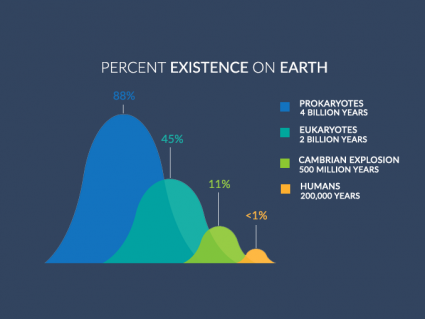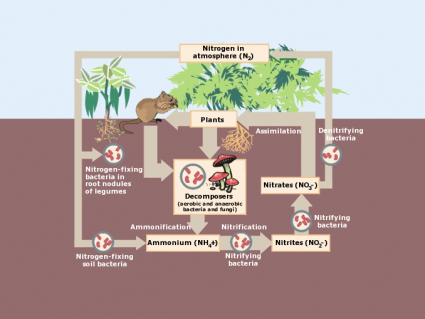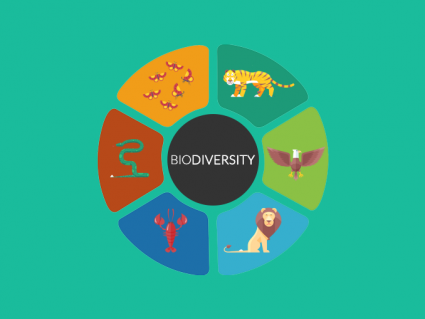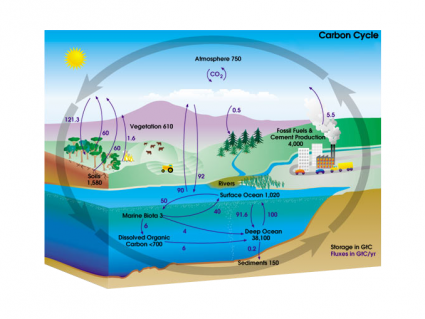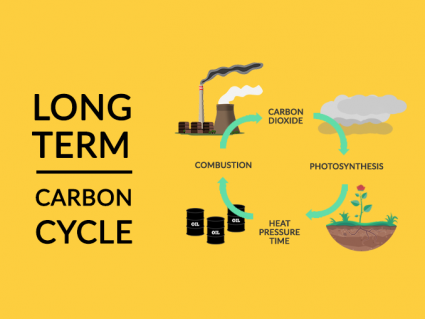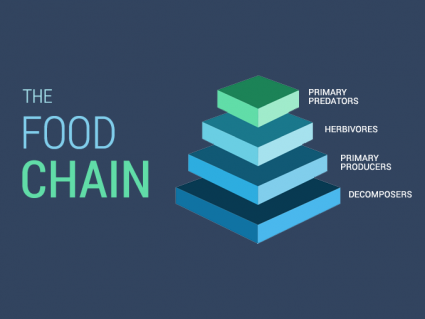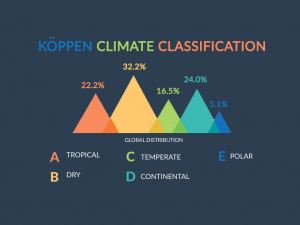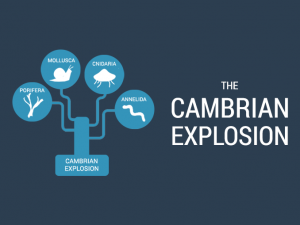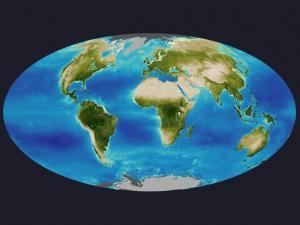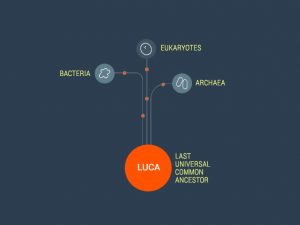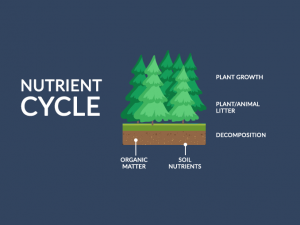The Importance of Mangroves in Ecosystems
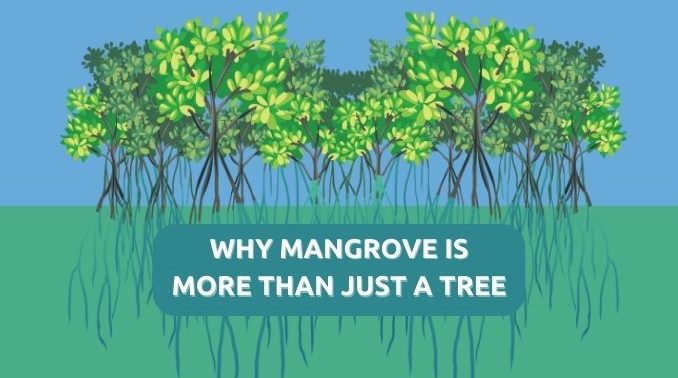
What is Special About Mangrove Trees?
Mangroves are special trees that grow in coastal areas where the land meets the sea.
They have unique roots that can handle being in saltwater and help protect the shore from erosion.
These trees also provide a home for many different animals, like crabs and fish.
They’re like nature’s defense team, helping to protect the coastline and support marine life.
1. Carbon absorber
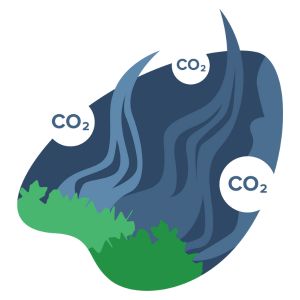
Mangroves are excellent carbon absorbers. Their trees and soil capture lots of carbon dioxide from the air.
These types of forests are important for fighting climate change because they reduce greenhouse gases by storing carbon.
Mangrove forests help fight global warming by absorbing carbon dioxide from the air. Overall, mangrove forests are one of the top three carbon-capturing ecosystems.
2. Home to thousands of species

Mangroves are incredibly biodiverse ecosystems and are home to thousands of species. These special forests by the coast are home to many different plants and animals, like fish, crabs, birds, and even some mammals.
Marine species rely on them because they provide essential habitat for them. So, you can think of mangroves as bustling marine communities that support a vast array of life.
Unfortunately, when mangrove forests are gone, it can disrupt and threaten the survival of many wildlife. In addition, when mangrove forests are lost, it can affect nearby communities. These communities depend on the forests for fishing and for protection from rising sea levels.
3. A natural coastal fortress
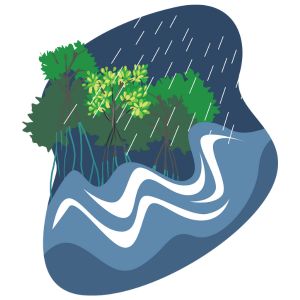
Mangroves act as a natural fortress against floods and storm surges. The roots of mangroves filter the sediments from land and river, protecting the coastline and slowing erosion.
These resilient trees serve as a buffer, reducing the destructive force of high tides and storm-driven waters, which can otherwise flood coastal areas.
The natural filtration process keeps water clean and stops too much sediment from building up on the coast. In essence, mangroves act as guardians of the coastline, shielding it from flooding and keeping it stable over time.
Where can you find mangroves?
Here’s a list of regions and countries where you can find mangroves:
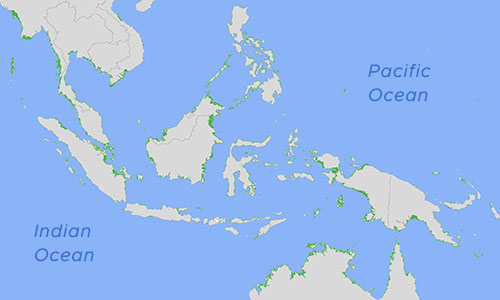
- Southeast Asia: Including countries like Indonesia, Malaysia, Thailand, and the Philippines.
- South Asia: Such as India, Bangladesh, and Sri Lanka.
- Australia: Especially in the northern regions, like the Northern Territory and Queensland.
- Africa: Including countries like Nigeria, Kenya, Tanzania, and Mozambique.
- The Caribbean: In places like the Dominican Republic, Cuba, and the Bahamas.
- Central and South America: Such as Brazil, Ecuador, and Colombia.
- Central America: Including Mexico and countries in Central America.
- The United States: In states like Florida, Louisiana, and Texas.
- Pacific Islands: Such as Papua New Guinea, Fiji, and the Solomon Islands.
These are just some of the regions and countries where mangroves are commonly found. For each region, they play a vital role in its type of ecosystem.
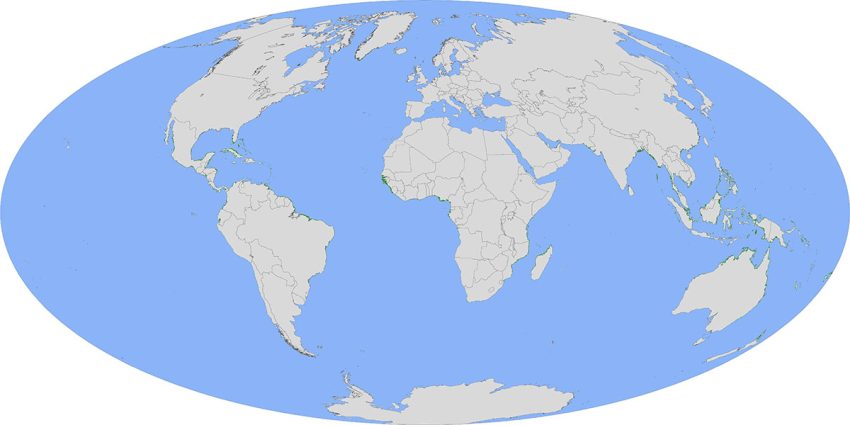
Mangroves vs Typical Forest Ecosystems
Mangroves are more than just trees. Here’s a comparison table highlighting the differences between a mangrove and a typical forest ecosystem:
| Aspect | Mangrove Ecosystem | Forest Ecosystem |
|---|---|---|
| Location | Coastal regions, typically in tropical and subtropical areas. | Diverse geographic locations, including temperate, tropical, and boreal regions. |
| Vegetation | Dominated by salt-tolerant trees and shrubs adapted to brackish water. | Comprised of a variety of tree species that are adapted to freshwater or non-saline soil. |
| Soil Type | Salty and waterlogged soil with low oxygen levels (anoxic conditions). | Typically, well-drained soil with varying levels of acidity or alkalinity. |
| Biodiversity | Home to a unique mix of flora and fauna, including salt-tolerant species. Rich in specialized species. | Supports a diverse range of plant and animal species, including terrestrial mammals, birds, and insects. |
| Water Conditions | Subject to daily tidal influence, with a mix of saltwater and freshwater. | Relies primarily on rainfall and groundwater for water supply. |
| Climate | Often exposed to high temperatures, high humidity, and salt spray. | Subject to a wide range of climate conditions, from arid to temperate to tropical. |
| Erosion Control | Provides natural coastal protection by dissipating wave energy and stabilizing shorelines. | Forests help prevent soil erosion and landslides, maintaining stability on land. |
| Carbon Sequestration | High carbon sequestration capacity, acting as “blue carbon” sinks. | Effective in sequestering carbon, contributing to climate change mitigation. |
| Human Interaction | Valuable for traditional and economic purposes, including fisheries, wood, and ecotourism. | Significant for timber production, agriculture, and recreational activities. |
| Conservation Efforts | Many mangrove ecosystems face threats and require active conservation and restoration efforts. | Forests globally face deforestation and require extensive conservation efforts. |
Mudflats often form near mangroves, providing a base where mangrove trees can grow and thrive.

